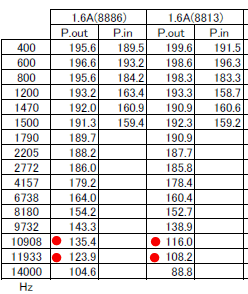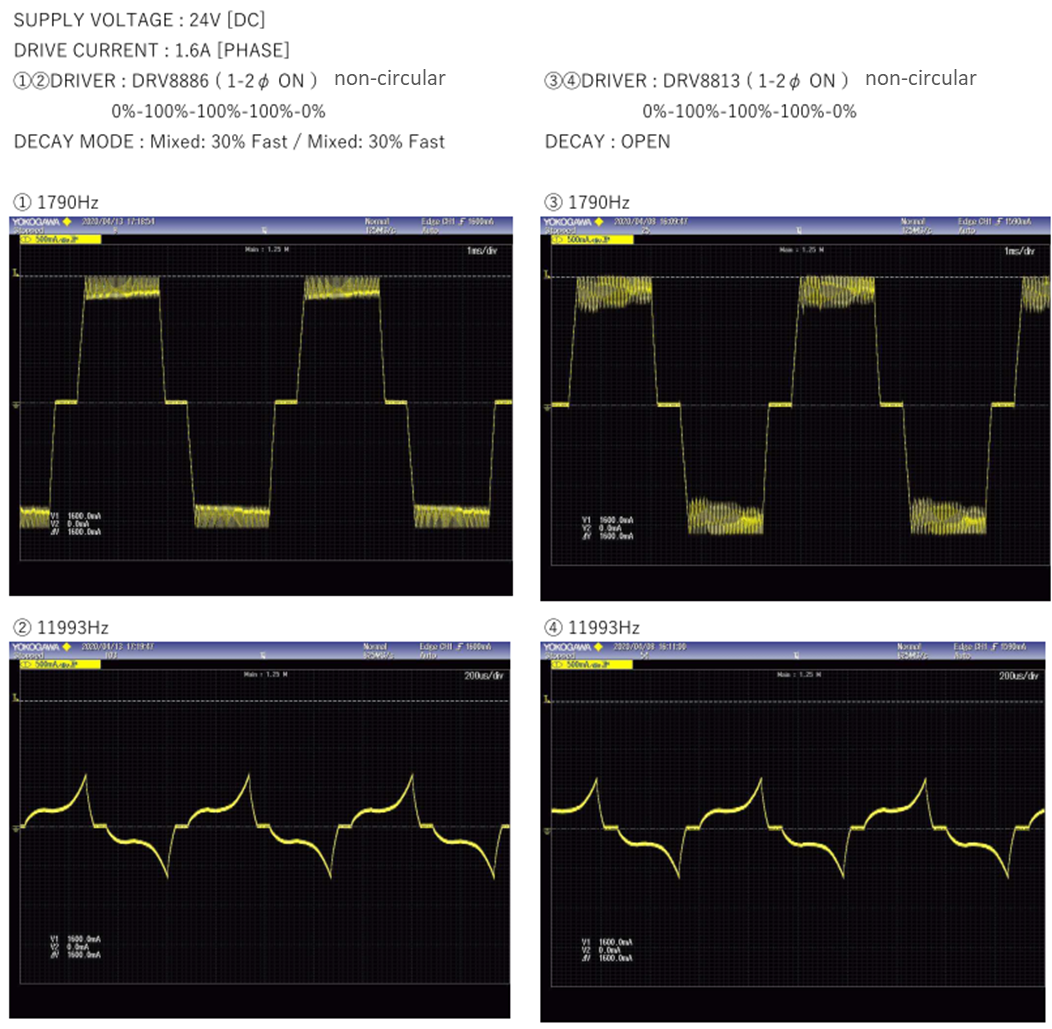Other Parts Discussed in Thread: DRV8813, , DRV8813EVM, DRV8818
Hi team,
I have a question about the difference between DRV8886 and DRV8813.
The boards to measure the 2 devices are similar conditions but the torque of DRV8886 shows 10-20% higher than DRV8813 at 10kHz as you see the following table.
I checked the current waveform but both waveform at 11993Hz are similar.
Therefore I guess this difference comes from other factor.
Could you estimate why the difference is appeared?
I use DRV8886EVM and DRV8813EVM to evaluate.
Best regards,
Koyo





